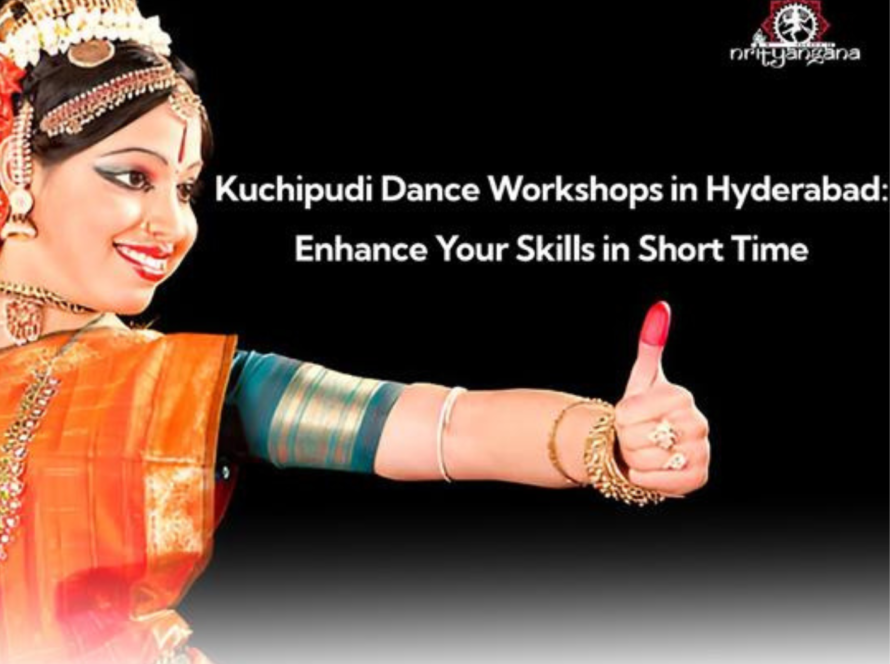The vibrant Indian classical dance boasts an array of captivating forms, each with its unique charm and cultural significance. While Kuchipudi and Bharatanatyam, both hailing from South India, share a common thread of storytelling and expressive movement, they possess distinct stylistic and thematic identities. Let’s voyage to reveal the nuances that set these two mesmerizing dance forms apart.
Roots and Narrative Focus:
⦁ Divine Origins: Bharatanatyam traces its lineage back to the ancient text “Natya Shastra,” attributed to Bharata Muni. It traditionally embodies bhakti (devotion) and celebrates deities like Shiva and Parvati.
⦁ Temple Traditions: Kuchipudi’s origins are believed to be intertwined with temple rituals and the artistic contributions of wandering storytellers called Bhagavathalu. While showcasing devotion, it delves deeper into human emotions and complex narratives like the Ramayana and Mahabharata.
Movement and Body Language:
⦁ Sharp and Graceful: Bharatanatyam is known for its quick, angular movements and precise footwork. The dancer’s posture is erect, and the expressions are controlled and subtle.
⦁ Rounded and Expressive: Kuchipudi movements are characterized by flowing lines, rounded postures, and graceful bends. The dancer utilizes wider body language and more expressive facial gestures to convey emotions.

Hand Gestures and Storytelling:
⦁ Hastasampradaya: Both forms utilize the intricate system of hand gestures called “Hastasampradaya” to communicate emotions and actions. However, Bharatanatyam employs more geometric shapes and subtle hand changes, while Kuchipudi embraces bolder gestures and broader movements.
⦁ Natyam and Natya: While Bharatanatyam focuses primarily on pure dance (Nritta) and expressive dance (Nritya), Kuchipudi emphasizes dramatic storytelling (Natya) with greater emphasis on dialogue and mime.

Costumes and Accessories:
⦁ Elegance and Restraint: Bharatanatyam attire is characterized by a single, flowing sari, usually in muted tones like green, orange, or saffron. Dancers adorn themselves with minimal jewellery, emphasizing simplicity and elegance.
⦁ Vivid Hues and Elaboration: Kuchipudi costumes are more vibrant, featuring a combination of a nine-yard sari called the Pachabottu and a fitted choli adorned with intricate embroidery and sequins. Dancers wear elaborate jewellery like heavy necklaces, bangles, and head ornaments, adding grandeur to their attire.
Jewellery:
⦁ Bharatanatyam: Less is more. Dancers typically wear minimal jewellery like simple necklaces, bangles, and hair ornaments, usually gold or silver. The focus remains on the dancer’s expressions and movements.
⦁ Kuchipudi: Embraces elaborate adornment. Heavy necklaces, intricate haaramas, and kamarbandhs (waistbands) made of gold, pearls, and precious stones add opulence and grandeur. Head ornaments like jadtis and venis complete the regal attire.
Symbolism and Cultural Influences:
⦁ Bharatanatyam: Jewellery often holds symbolic meaning. Temple jewellery with motifs like Shiva’s Trishul or Parvati’s lotus pay homage to deities. Mughal influences might be seen in jhumkas and chandbalis.
⦁ Kuchipudi: Jewellery draws inspiration from temple sculptures and paintings. Intricate temple jewellery with intricate filigree work and precious stones reflect the rich cultural heritage of Andhra Pradesh.
Evolution and Contemporary Trends:
⦁ Bharatanatyam: Modern interpretations showcase minimalistic jewellery with contemporary designs, maintaining the elegant aesthetic. Dancers might experiment with fusion elements like oxidized silver or coloured gemstones.
⦁ Kuchipudi: While embracing contemporary designs and lighter materials, the core essence of grandeur remains. Dancers like Yamini Reddy experiment with layering necklaces and incorporating modern motifs within traditional styles.

A Visual Feast:
⦁ Bharatanatyam: Imagine Alarmel Valli’s “Shiva Panchakshara Stotram,” her flowing saffron sari and delicate gold jewellery harmonizing with her controlled movements, creating a picture of divine serenity.
⦁ Kuchipudi: Picture Rukmini Devi Arundale’s “Krishna Leela Tarangam,” her vibrant Pachabottu adorned with intricate embroidery and glittering jewellery, complementing her dynamic movements and expressive storytelling.
Music and Rhythm:
⦁ Carnatic Fusion: Bharatanatyam’s musical accompaniment typically features the Carnatic system with instruments like the nattuvangam, mridangam, and flute. The music is characterized by complex rhythmic patterns and a focus on devotional melodies. Shobana’s “Varnam” in Bharatanatyam features intricate rhythmic patterns played on the mridangam and nattuvangam, alongside her powerful vocal renditions. Critic Sunil Kothari praises her “mastery of Carnatic music, seamlessly integrated into the dance.”
⦁ Vocal Emphasis: While also utilizing Carnatic instruments, Kuchipudi heavily emphasizes vocal renditions of padams (lyrical compositions) and sthalasthala savarnams (rhythmic syllables) to narrate stories and convey emotions. Manju Bhargavi’s “Bhamakalapam” in Kuchipudi highlights the importance of vocal storytelling. Her soulful renditions of padams and sthalasthala savarnams not only narrate the story but also evoke emotions in the audience. Scholar Farley Richmond notes, “Bhargavi’s captivating vocals are integral to the emotional depth of Kuchipudi.”
Beyond the Differences: Shared Legacy and Evolution
Despite their distinct characteristics, Kuchipudi and Bharatanatyam share a common thread of storytelling, spiritual essence, and dedication to preserving India’s rich cultural heritage. Both art forms have evolved over centuries, incorporating contemporary themes and technical innovations while staying true to their core values.
Witnessing the Beauty
Whether appreciating Bharatanatyam’s sharp elegance or Kuchipudi’s vibrant storytelling, both dance forms offer captivating journeys into the soul of India. Witnessing these art forms live allows audiences to connect with cultural history, delve into diverse narratives, and be mesmerized by the sheer artistry and dedication of the dancers.

